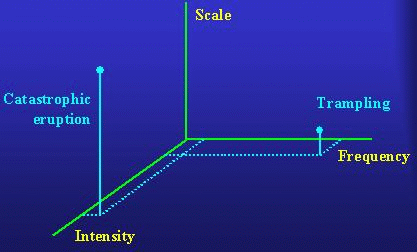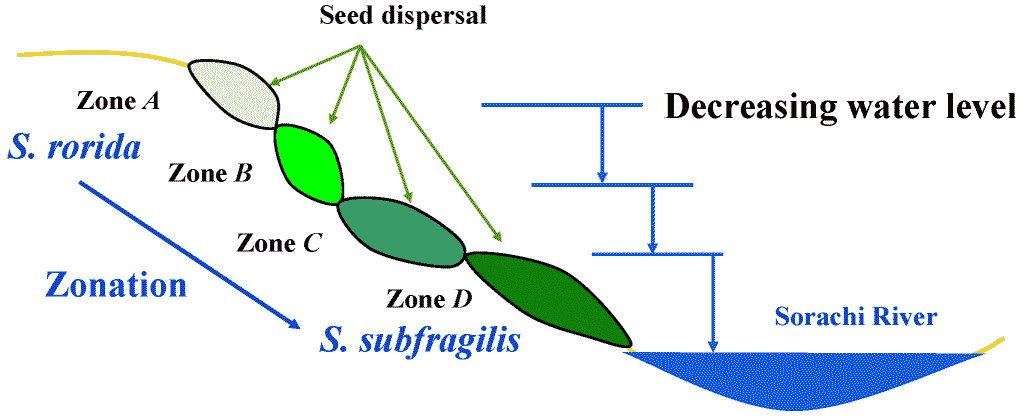(Upload on April 5 2025) [ 日本語 | English ]
Mount Usu / Sarobetsu post-mined peatland
From left: Crater basin in 1986 and 2006. Cottongrass / Daylily
HOME > Lecture catalog / Research summary > Glossary > Disturbance
Major catastrophic events originating in the physical environment - events which cause abrupt structural change in communities (White 1979)
Problems
Three parameters on disturbances
Disturbance regime = determined by the type and three parameters to characterize disturbances shown below:
Scale (size) |
Type• Natural disturbance• Human disturbance (human-induced disturbance, or anthropogenic disturbance) Ecosystem health (生態系の健全性)a metaphor used to describe the condition of an ecosystemproductivity resilience, and organization, including biodiversity changed by disturbances, e.g., flooding, drought, biological invasion, climate change, mining, overexploitation, and landuse change⇒ the relationship between resilience and diversity |
|
Volcanic eruption Landslide Wildfire
black spruce forests in Alaska (Tsuyuzaki et al. 2014) Fire intensity Low High Duff consumption Plant mortalitya Low High Seed banka Rich Poor Seedbed Bad Well a: not only aboveground biomass but also underground biomass, including roots and buried seeds are killed. Charcoal (used for reconstructing wildfire history)Ash/charcoal layer - praticle size |
[ flood disaster ( 水害 )] Floodplain (氾濫原)Pattern of vegetation zonantion on Sorachi River floodplain Disturbacnes, such as flood, are important for the vegetation zonation Human activities destroy the zonation: dam construction + global warming |
Large-scale
| Global warming (+ ozene hole) Small-scale |
[ occurring with various scales = biological invasion (生物学的侵入)] |
Way to go
|
Directly affecting vegetationShoot damagesReduced plant activities Reduced regeneration Lost vegetation cover Lost diversity Indirectly affecting vegetation via the alteration of soilLost organic matterReduced soil porosity Decreased air and water permeability Increased run off Increased soil instabilities ☛ the effects of yak grazing on vegetation = grazing + trampling (+ human impact) ☛ camp site (Tsuyuzaki & Titus 2010) |
environments that are considered hard to survive in due to its extreme conditions such as temperature, accessibility to different energy sources or under high pressure
Alpine (高山)Alpine zone (高山帯) |